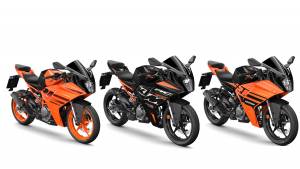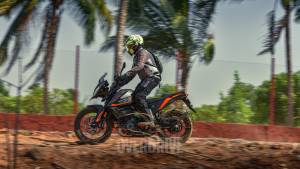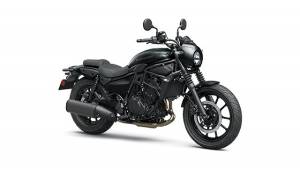Spec comparison: All-new Kawasaki Ninja 400 vs KTM RC 390 vs 2018 Yamaha YZF-R3
Kawasaki India has just launched the Ninja 400 that is being seen as a worthy replacement of the Ninja 300. The Kawasaki Ninja 400 is priced at Rs 4.69 lakh, ex-showroom. Deliveries of the same are scheduled to start in the country from June onwards. The Kawasaki Ninja 400 locks horns with other entry-level supersport offerings like the recently updated Yamaha YZF-R3 and the popular KTM RC 390. How do these motorcycles fair against each other, we take a look in our spec comparison report.
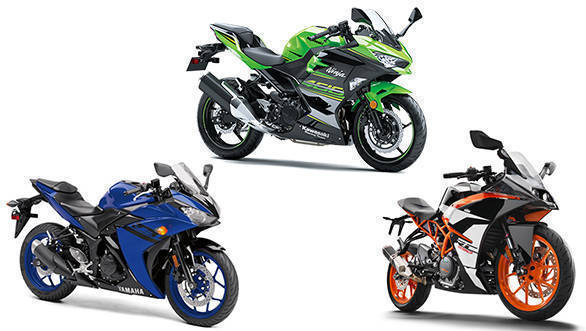
Styling
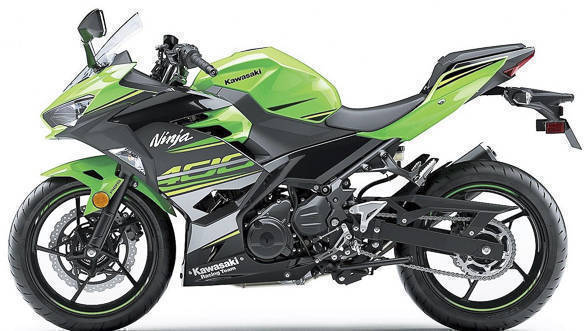 The razor sharp styling of the Ninja 400 is unmistakably Kawasaki.
The razor sharp styling of the Ninja 400 is unmistakably Kawasaki.
The 2018 Kawasaki Ninja 400 looks really impressive as it draws styling inspiration from its larger supersport siblings. The detailing on the chin spoilers and the triple-peak motif tail are reminiscent of those on the Kawasaki Ninja H2. The razor sharp styling of the Ninja 400 is unmistakably Kawasaki. The 2018 Yamaha YZF-R3 too is one impressive looking machine. As a part of 2018 update, the R3 retains its sharp styling and gets cosmetic upgrades to distinguish the 2018 model-year Yamaha YZF-R3 from its previous iteration. There are two new colour options - Yamaha racing blue and magma black.
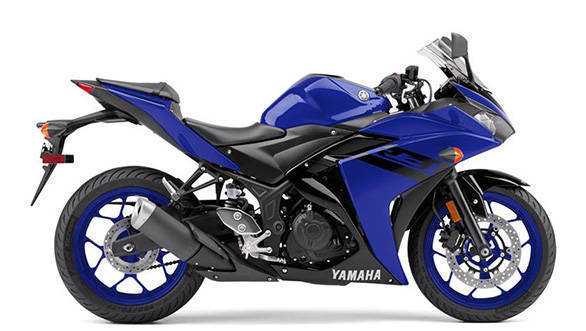 The updated R3 retains its sharp styling and gets cosmetic upgrades to distinguish the 2018 model-year Yamaha YZF-R3 from its previous iteration.
The updated R3 retains its sharp styling and gets cosmetic upgrades to distinguish the 2018 model-year Yamaha YZF-R3 from its previous iteration.
The KTM RC 390 that got an update last year which gave it a revised belly panel (with a sharper vee) and a side slung exhaust. This not only makes the motorcycle appear leaner, but also allows a higher degree of lean. We believe the Kawasaki Ninja 400 looks the best when compared to the other two, but as we always say, design is a personal preference.
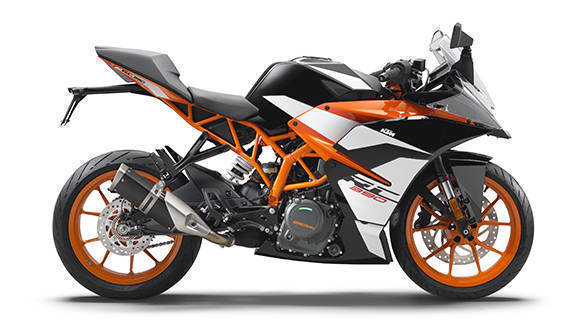
Chassis
The Kawasaki Ninja 400 is built on an all-new chassis. Like the Ninja H2, the Ninja 400 too uses a trellis-type frame and Kawasaki claims that it offers higher rigidity as the engine is the stressed member. The swingarm mounting plate is made of aluminium that is bolted to the rear of the engine, like the H2. This negated the need of adding cross members for stabilization. The Ninja 400 also features a 310mm front disc brake ((the same disc size used on the Ninja ZX-14R) with Nissin calipers and ABS.The Kawasaki Ninja 400 gets 41mm telescopic fork in the front and a gas-charged shock with adjustable preload in the rear.
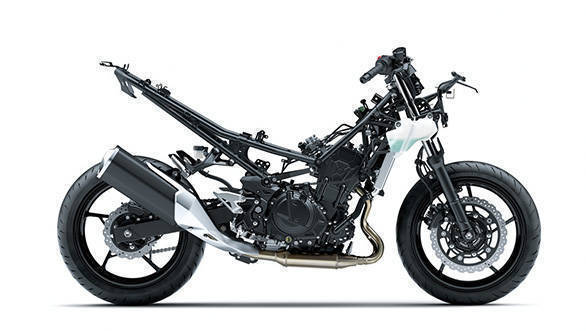 Kawasaki claims that the all new frame of the Ninja 400 offers higher rigidity
Kawasaki claims that the all new frame of the Ninja 400 offers higher rigidity
The Yamaha YZF-R3 gets a diamond-type steel frame. The engine is mounted to this frame with three rigid mounts and one rubber mount. By using rigid mounts, the crankcase is the stressed structural member of the chassis and contributes to weight reduction, states Yamaha. The Yamaha R3 gets 298mm front and 220mm rear disc brakes with dual channel ABS.
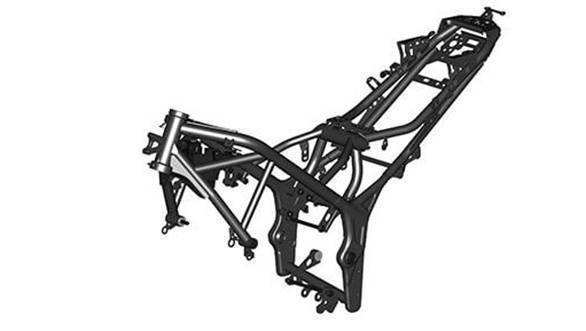
The KTM RC 390 is built on the same steel trellis frame architecture as the Duke. In the last update, the steering head angle was increased to 66.5 degree that has resulted in a shorter trail, shorter wheelbase and increased ground clearance. The other change was the new brake setup which includes the 320mm rotor and repositioned caliper as well as a new master cylinder. The KTM RC 390 comes with upside-down WP suspension that has the same 43 mm outer tube diameter as the RC8 R. This one too comes with dual channel ABS. Read our detailed first ride review of the KTM RC 390 to get more details.
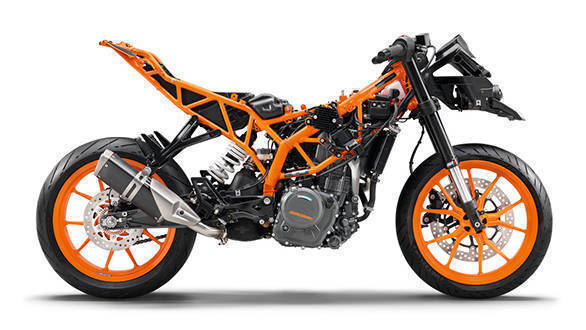 The KTM RC 390 is built on the same steel trellis frame architecture as the Duke.
The KTM RC 390 is built on the same steel trellis frame architecture as the Duke.
Engine
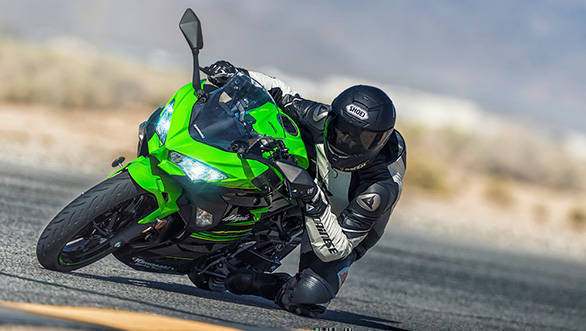 Kawasaki claims the that new Ninja 400 offers improved low-end torque while retaining a smooth throttle response
Kawasaki claims the that new Ninja 400 offers improved low-end torque while retaining a smooth throttle response
The 399cc parallel twin motor in the Kawasaki Ninja 400 produces 49PS / 38Nm, a significant upgrade from the Ninja 300's 39PS/27Nm. Kawasaki claims the that new Ninja 400 offers improved low-end torque while retaining a smooth throttle response. The Ninja 400 also gets a slipper clutch which also makes the clutch lever 20 per cent lighter in operation. The Yamaha YZF-R3 comes with a 321cc liquid-cooled twin cylinder engine that we like for its smoothness and linear power delivery. The 320.6cc, liquid-cooled engine in the R3 makes 42PS and generates 29.6Nm. The 373cc motor in the KTM RC 390 makes 43.5PS and 35Nm. In the 2017 KTM RC390, KTM has added ride-by-wire which eliminates a direct connection between the throttle and the throttle bodies as it were. When you open the throttle, the ECU reads a throttle position sensor to ascertain what you would like to do in terms of engine torque within the context of the load on the engine, gear selection etc.
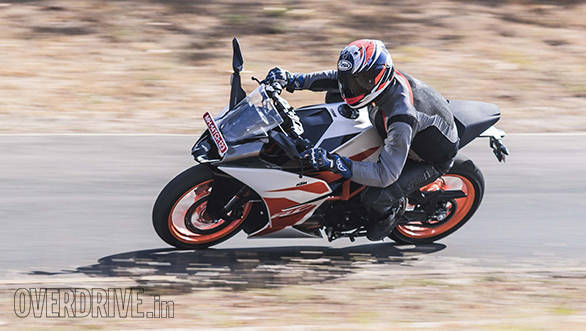 KTM has added ride-by-wire which eliminates a direct connection between the throttle and the throttle bodies as it were
KTM has added ride-by-wire which eliminates a direct connection between the throttle and the throttle bodies as it were
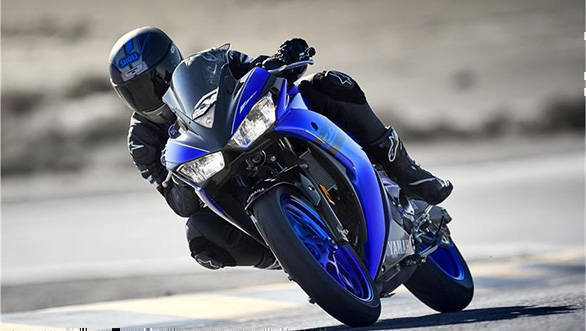
Pricing
The most expensive of the lot is the Kawasaki Ninja 400 at Rs 4.69 lakh followed by the Yamaha YZF-R3 at Rs 3.48 lakh. The motorcycle that comes across as the most value for money supersport offering is the KTM RC 390 at Rs 2.35 lakh. We will be doing a real world comparison of these entry-level supersport offerings. Here is a quick look at the technical specifications and numbers of these three motorcycles. Let us know your favourite in the comment section below.
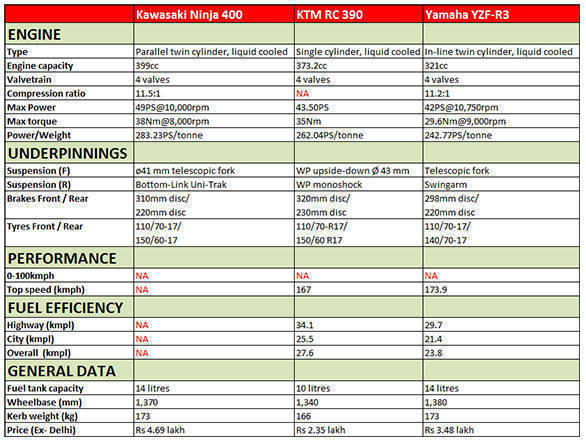
Also see,
First look video: All-new Kawasaki Ninja 400
2018 KTM RC390 first ride review video:
Starts Rs 4,69,000
399cc
6-Speed
49.00
38.00
-NA-
Starts Rs 3,50,180
321cc
6-Speed
42.00
30.00
-NA-
Starts Rs 1,02,700
149cc
5-Speed
12.40
13.60
-NA-
Starts Rs 3,14,000
373cc
6-Speed
43.00
37.00
-NA-
Starts Rs 33,30,000
998cc
6-Speed
310.00
165.00
-NA-
Related Stories
Top Stories
Latest Videos
Most Popular
- Upcoming Mahindra XUV 3XO: All you need to know
- New Suzuki Swift spotted testing
- Nissan Magnite EZ-Shift review - is the AMT any good?
- 2024 Hyundai Creta vs Toyota Urban Cruiser Hyryder vs Skoda Kushaq comparison review - the hype is real?
- Budget Sportbike Showdown: Kawasaki Ninja 500 vs Aprilia RS 457 vs Yamaha YZF-R3
